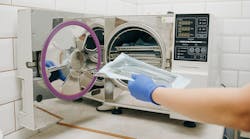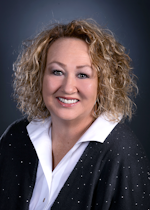Myth busters: No need to bag when sterilizing instruments
I don’t have to bag instruments to sterilize them. We use them right away so it’s no big deal. Our office is clean. Right? Wrong!
This is a huge deal. All instruments must be wrapped in a pouch and cassette covered in paper. Here is what the Centers for Disease Control and Prevention has to say.
What is the purpose of packaging instruments for sterilization? Packaging materials (e.g., wrapped or container systems) allow penetration of the sterilizing agent and maintain sterility of the processed item after sterilization.
What types of packaging materials are available for sterilizing instruments? Packaging materials include wrapped perforated instrument cassettes, peel pouches of plastic or paper, and sterilization wraps (which can be woven or unwoven). Packaging materials should be designed for the type of sterilization process being used and should be appropriate for the items being sterilized.
Here’s how to do it
Although many people say they use instruments immediately after they’ve been sterilized, that’s often not true. First, you must allow the item to go through every cycle and wait until it says, “cycle complete.” Removing it before the drying process will compromise sterilization, as will taking the instrument out while the pouch or paper is still wet. Only remove something when it’s completely dry. In most cases when the pouches or cassettes come out wet, it’s because they were placed in the autoclave wet. Check your manufacturer’s instructions for use. They state that you are to put only dry instruments into the autoclave. Dry instruments in, dry instruments out!
If you do remove an item immediately after the cycle is complete, I promise you, it will be too hot to use. I guess you could run it under cold water to cool it off, but then you have two problems. (1) Hot metal and cold water do not mix! If you put in a headpiece, there’s a very good chance you’ll crack the turbine. If it’s an instrument, you stand a good chance of breaking it off at its weakest point, which is the working end. (2) The water we use isn’t exactly sterile, is it? So, now you are introducing a sterile instrument to bacteria and then using it in a patient’s mouth. That’s never good.
The truth is, we don’t use instruments immediately, and they must remain sterile until the patient is seated. There is no place in an office that is sterile enough to set down an instrument. I don’t care how clean you believe your office is, laying down an instrument on any surface is not acceptable.
The CDC does not make “laws” governing this; they make recommendations and guidelines. However, unless you’ve been asleep the last 18 months, you’ll notice that the world listens to the CDC. This includes regulatory agencies such as OSHA, the FDA, and your state dental boards. Many of the state Dental Practice Acts have the CDC guidelines included in them, which makes them laws. So, ignoring these guidelines is not in your best interest.
I realize that bad practices happen in dental offices every day. But just because someone does something does not make it right. Do you want to be considered an oral health-care professional? Treat your facilities as if they are medical facilities because they are! Just because you can get away with something does not mean it’s OK to do it. Take pride in your profession and yourself and learn how to do the right thing. Then, teach others what is expected of them.
There are over 350,000 dental assistants in the United States, many of them with little or no schooling as most states have no requirements for the profession. However, to do the job correctly, you need to make an investment in learning what is necessary and proper. Take the time to do it right!
RELATED: To the rockin' dental assistants in charge of OSHA and infection control programs
Tija Hunter, CDA, EFDA, CDIA, CDSO, CDSH, MADAA, is a member and current vice president of the American Dental Assistants Association (ADAA), where she holds the honor of Master. Tija is the editor of Dental Assisting Digest and contributes to Dental Economics magazine. She is the director of the Dental Careers Institute, a dental assisting and dental continuing education program, and the author of seven continuing education study courses. She is an international speaker and a certified trainer in nitrous oxide in several states. Tija was named one of the Top 25 Women in Dentistry by Dental Products Report magazine in 2015. She can be reached at [email protected].







